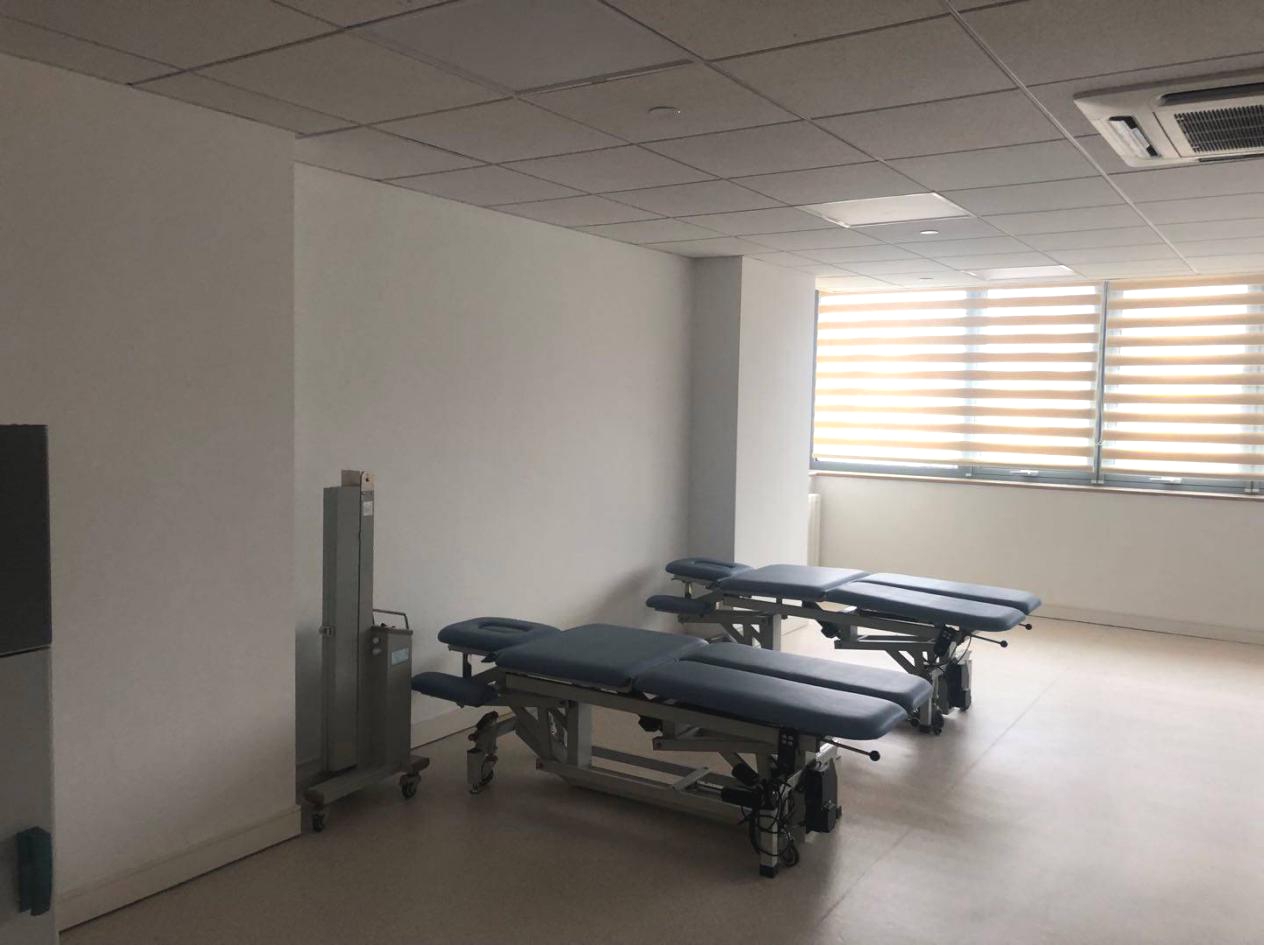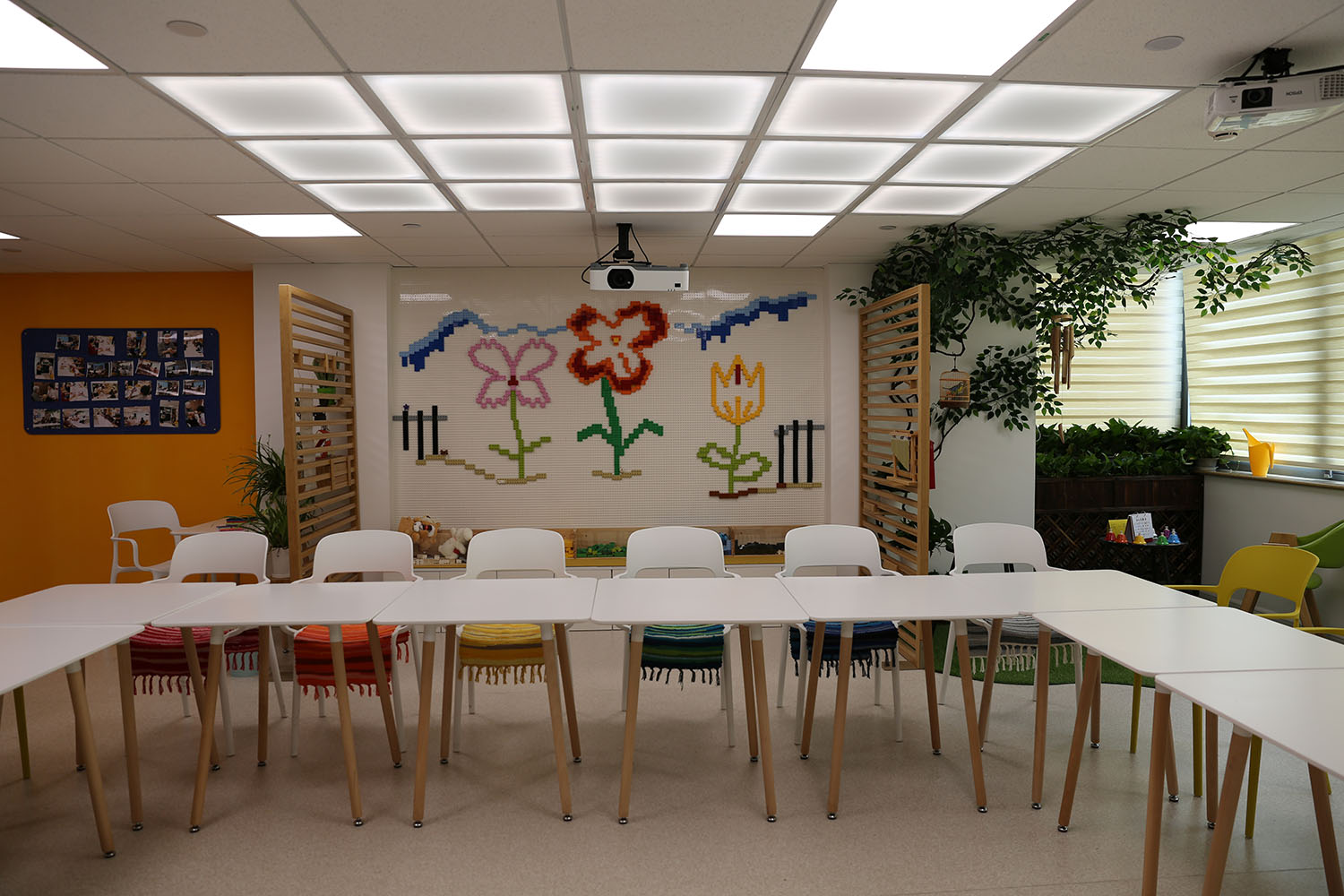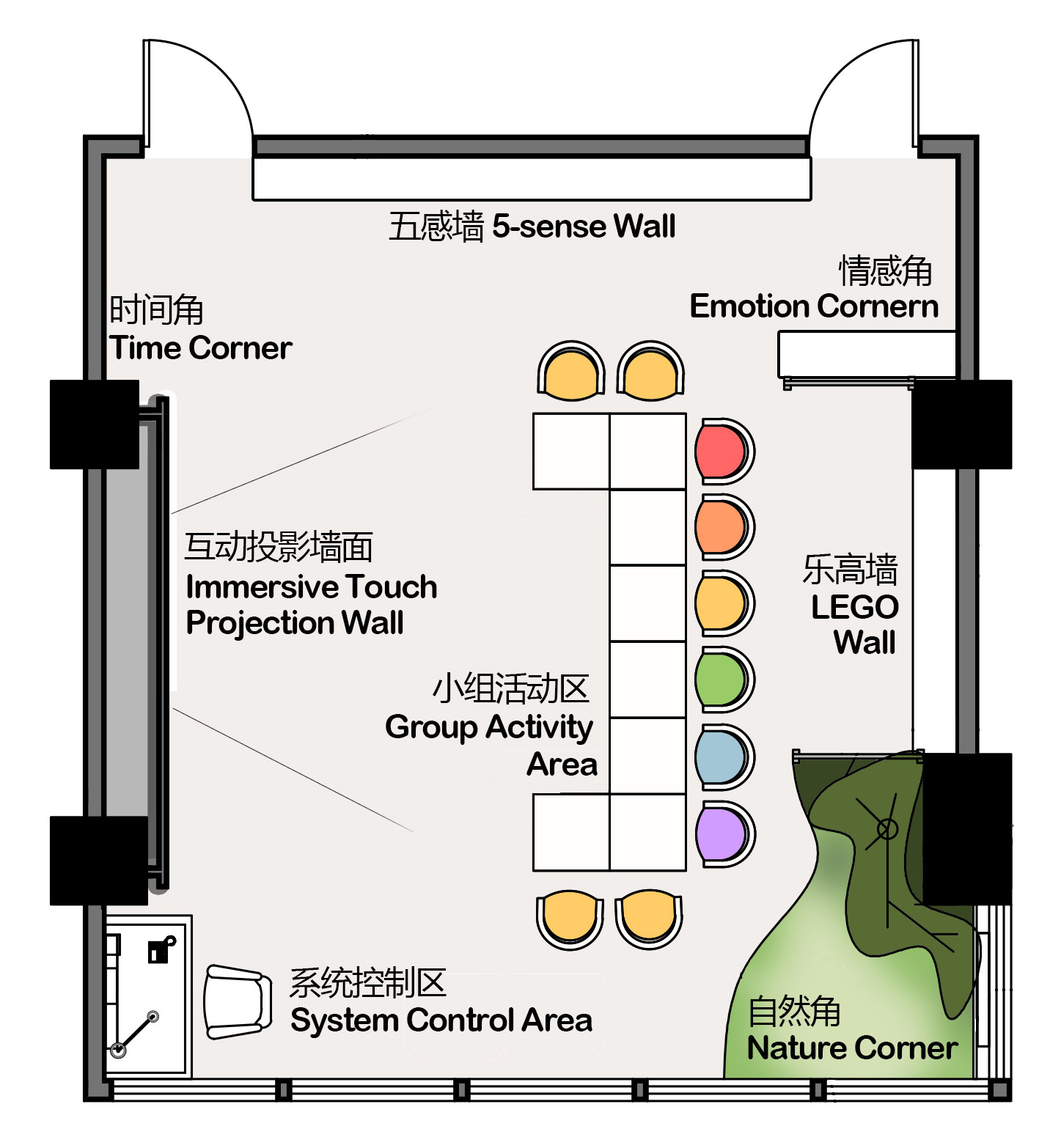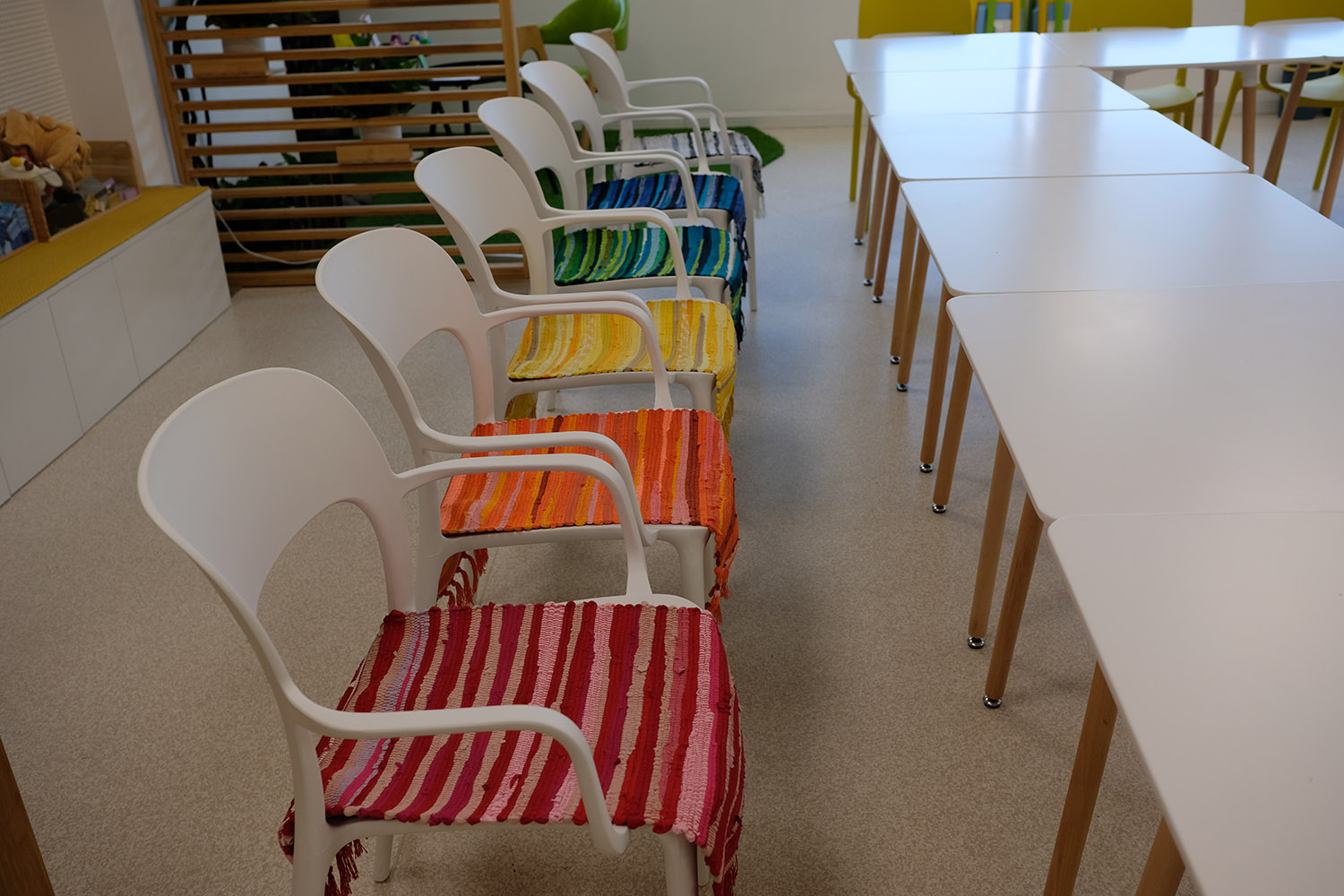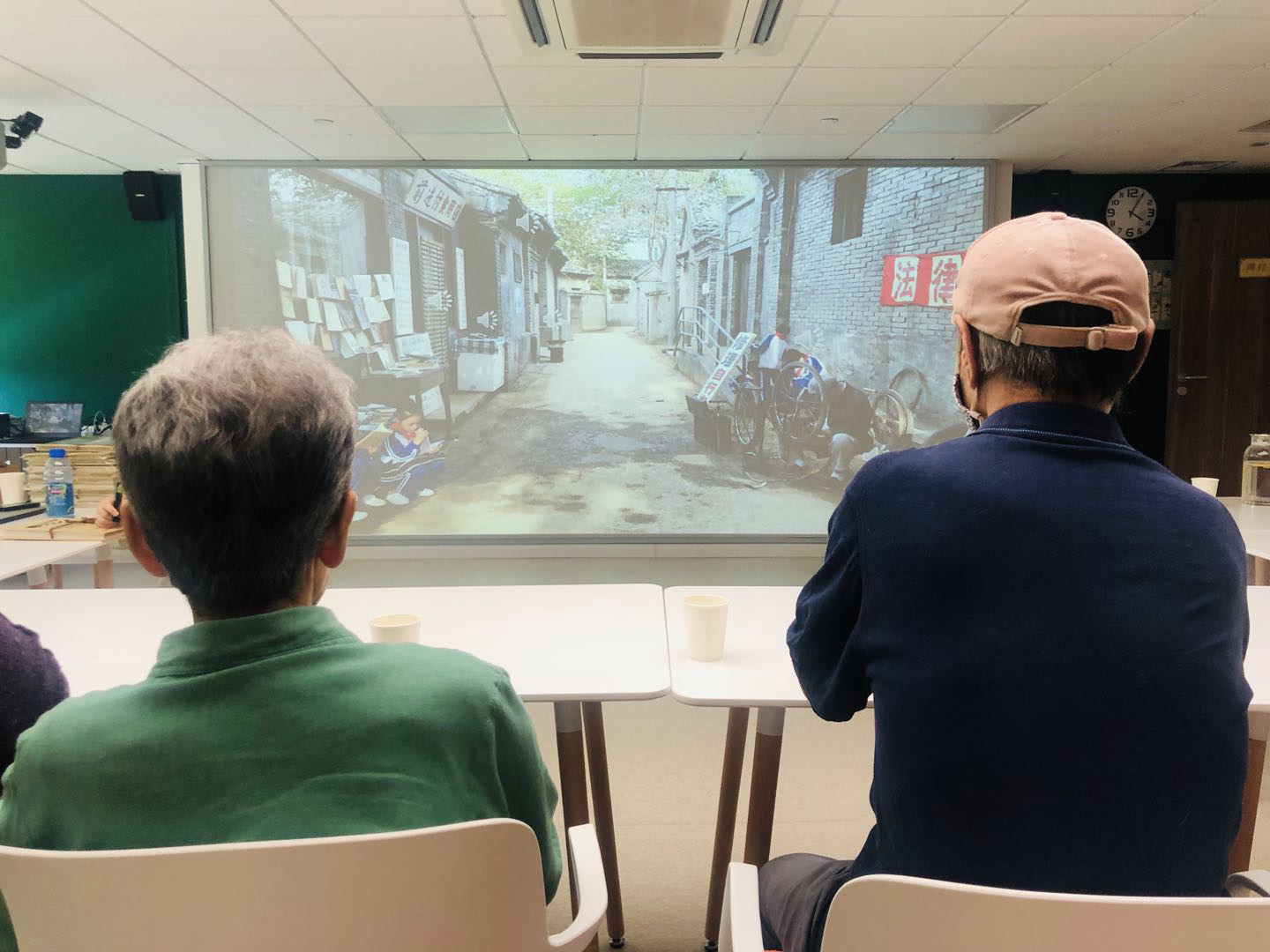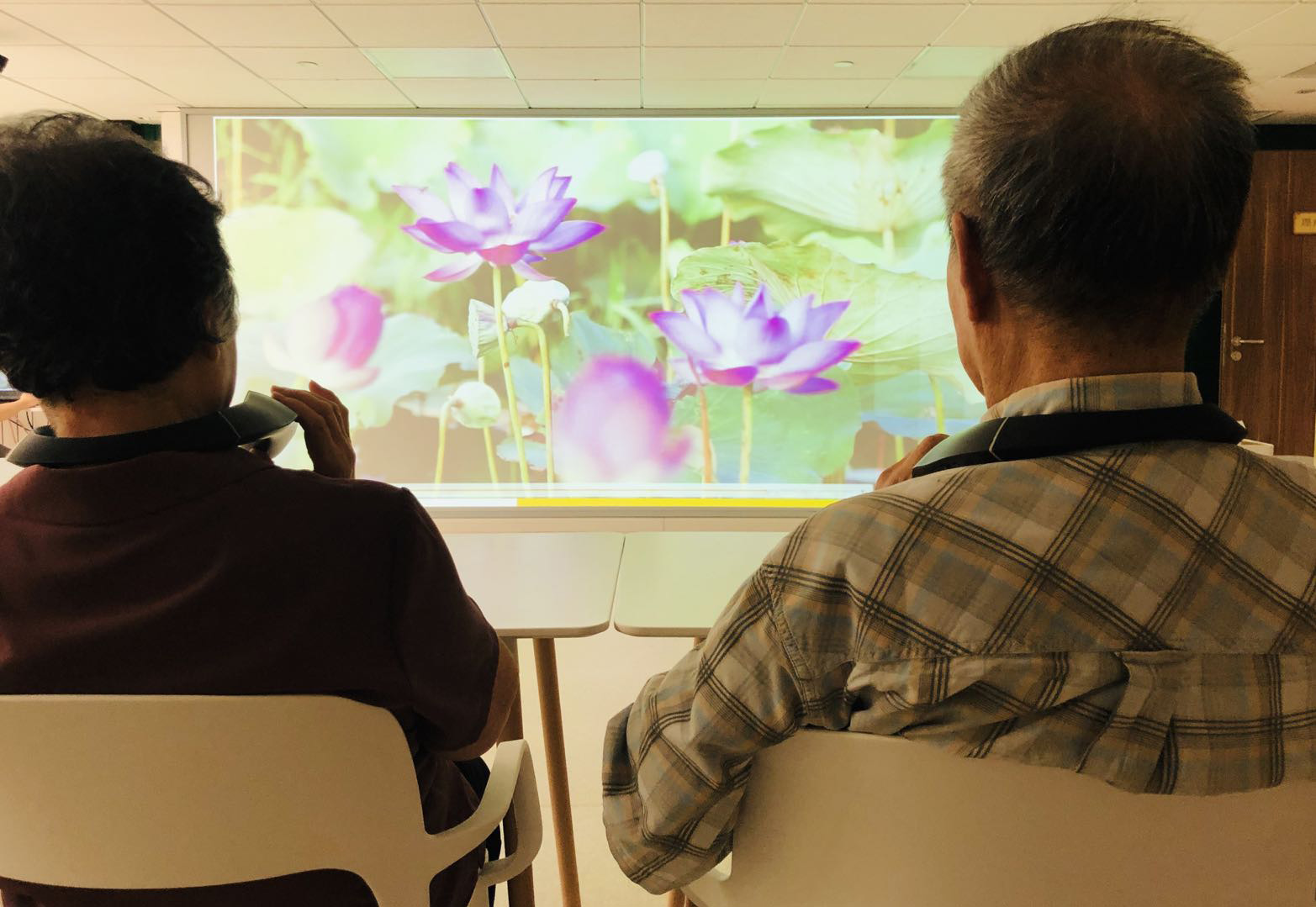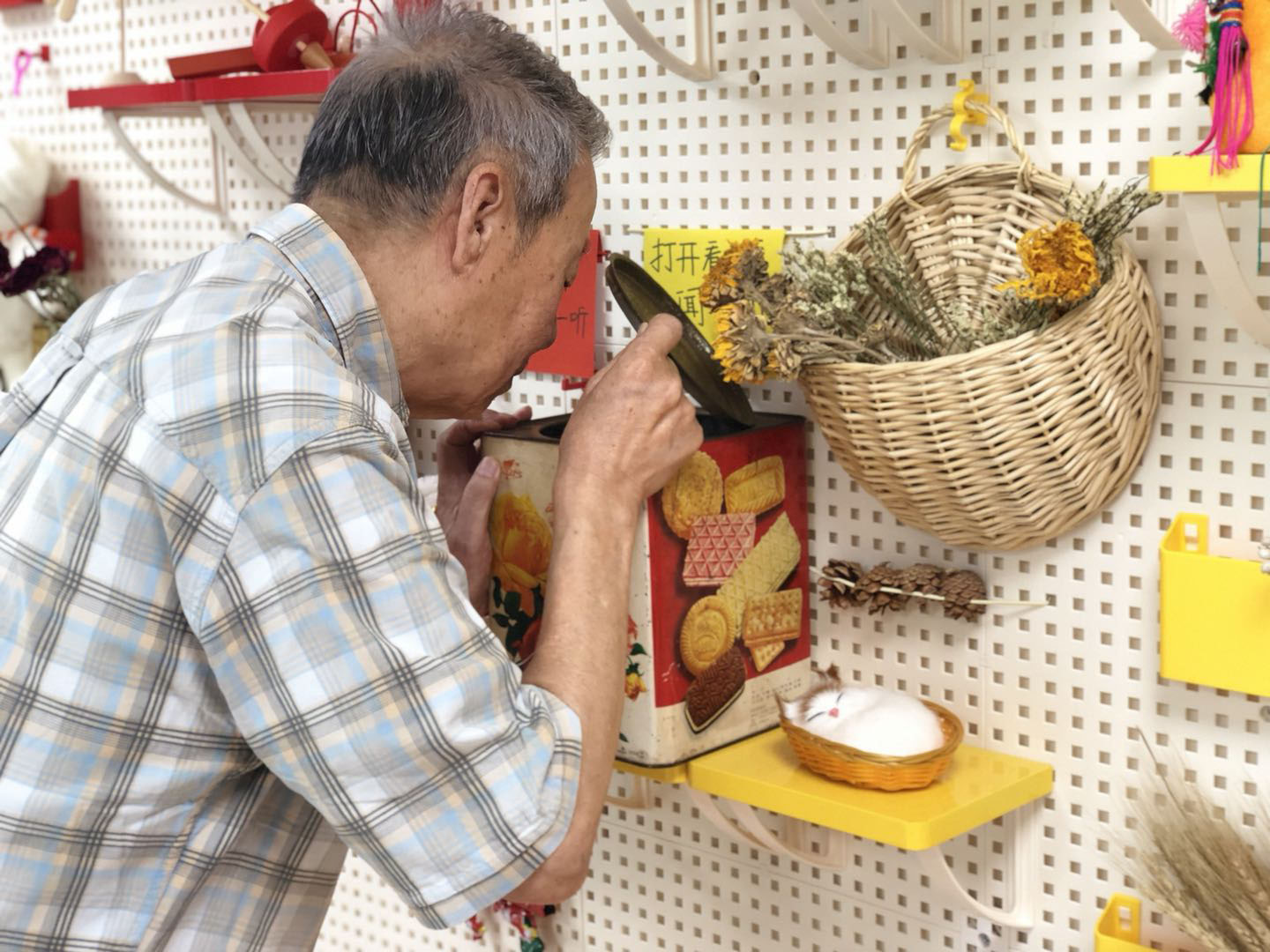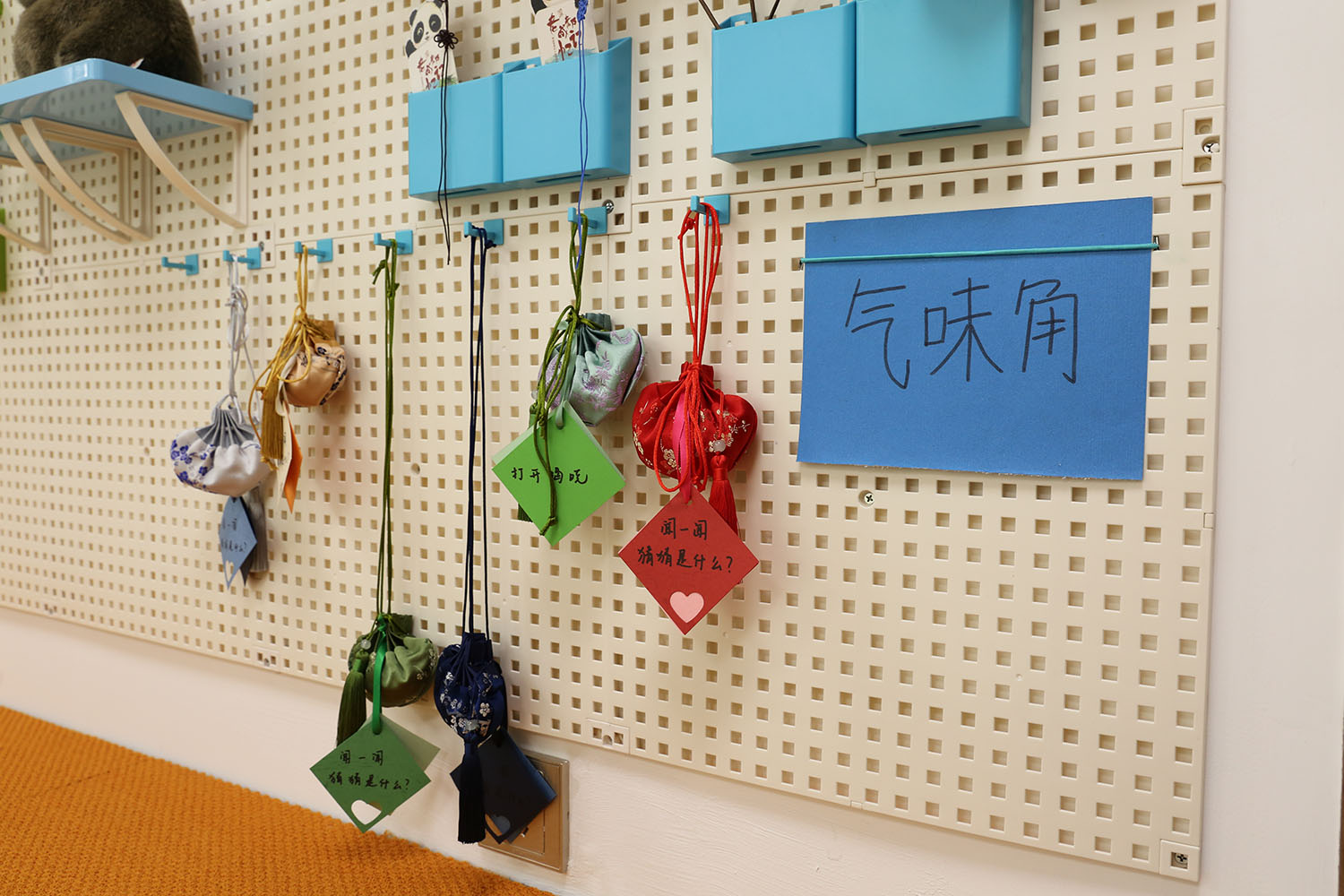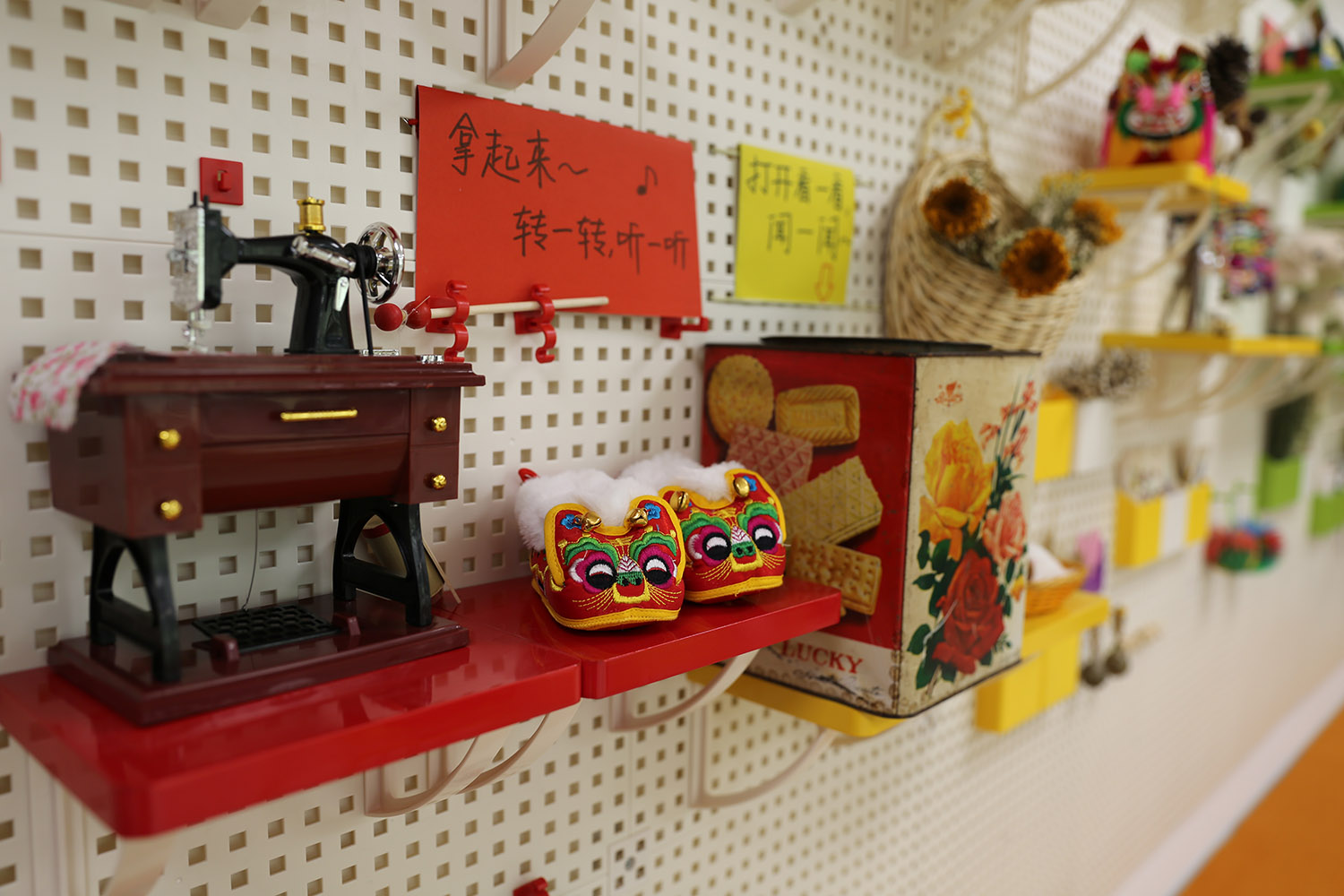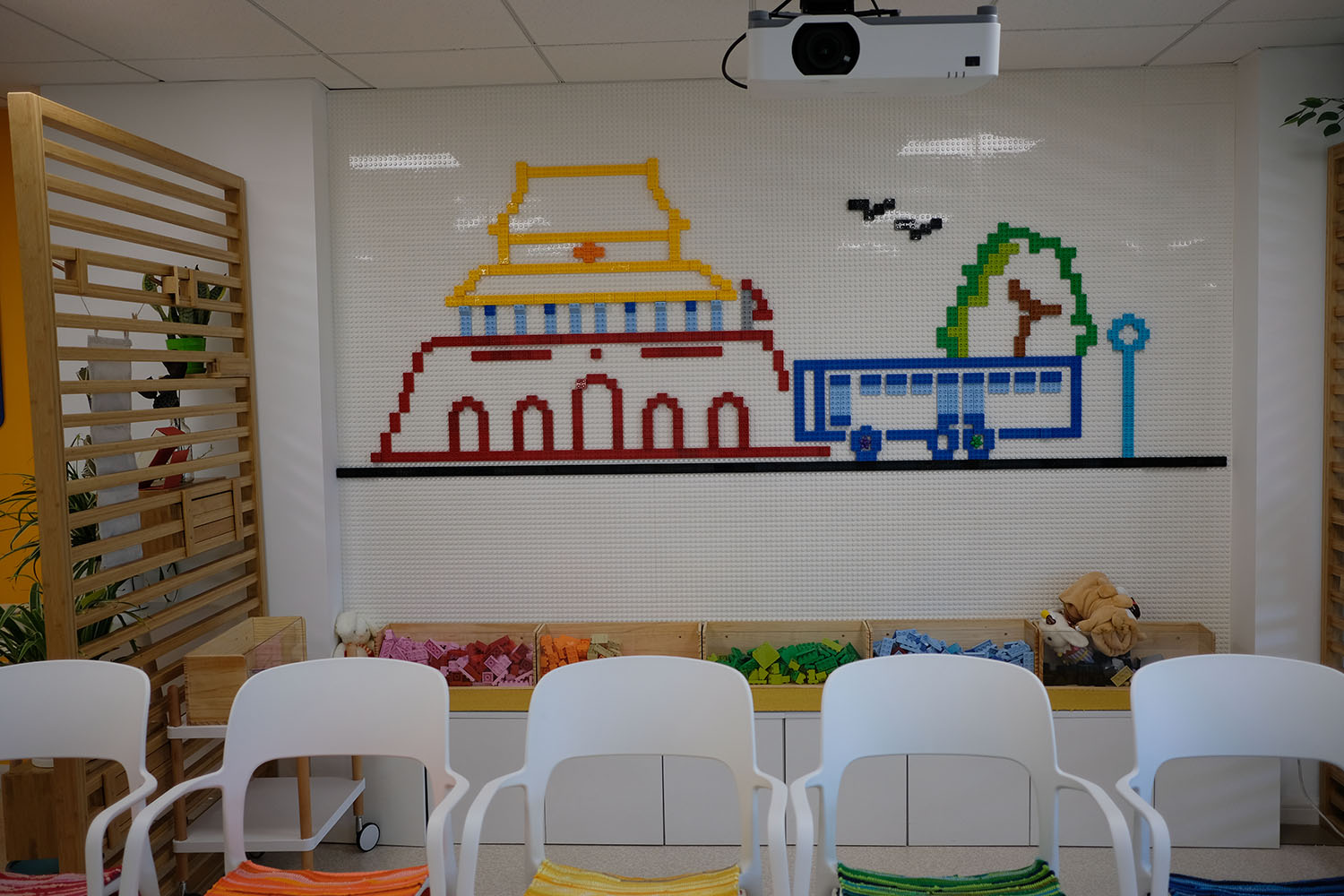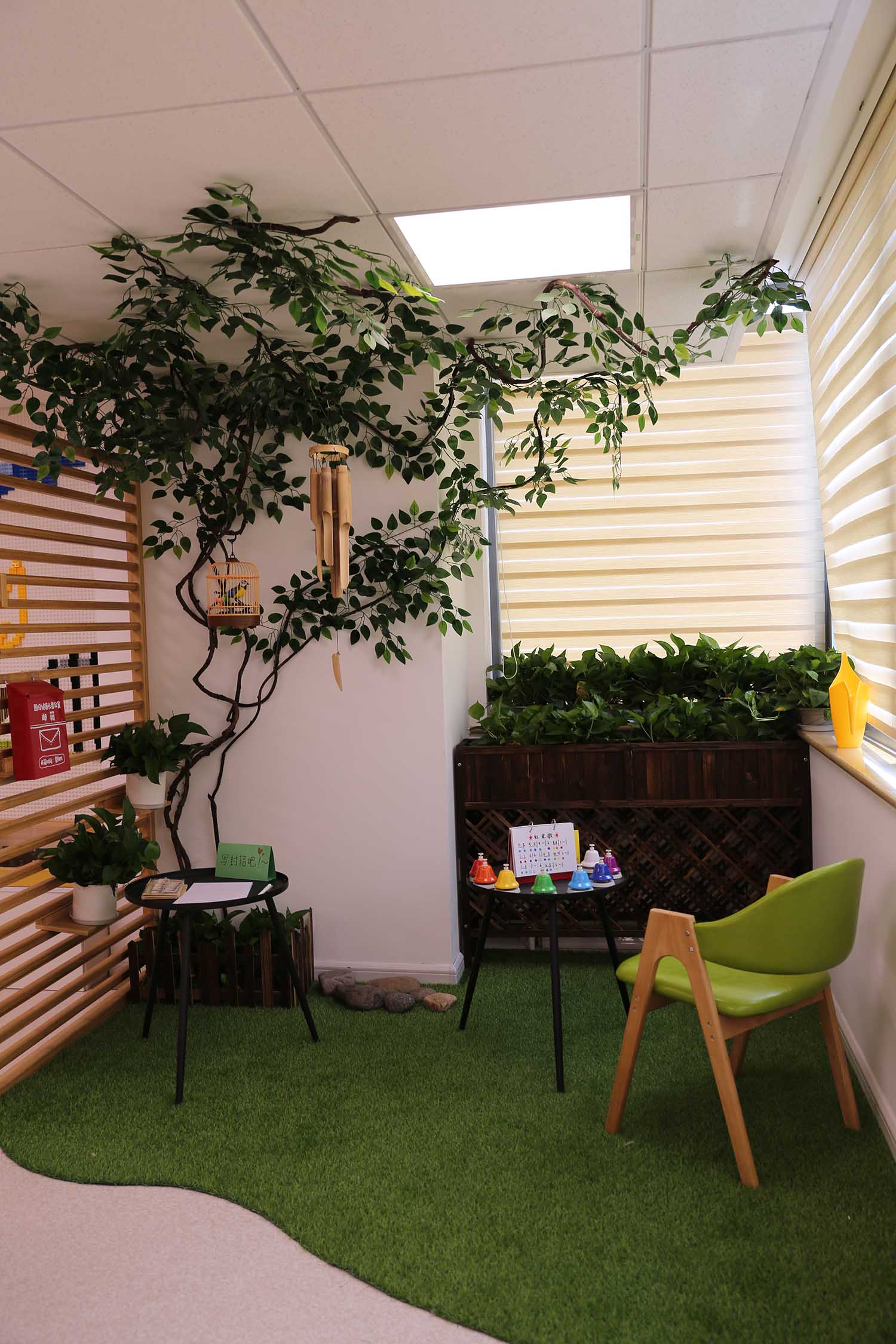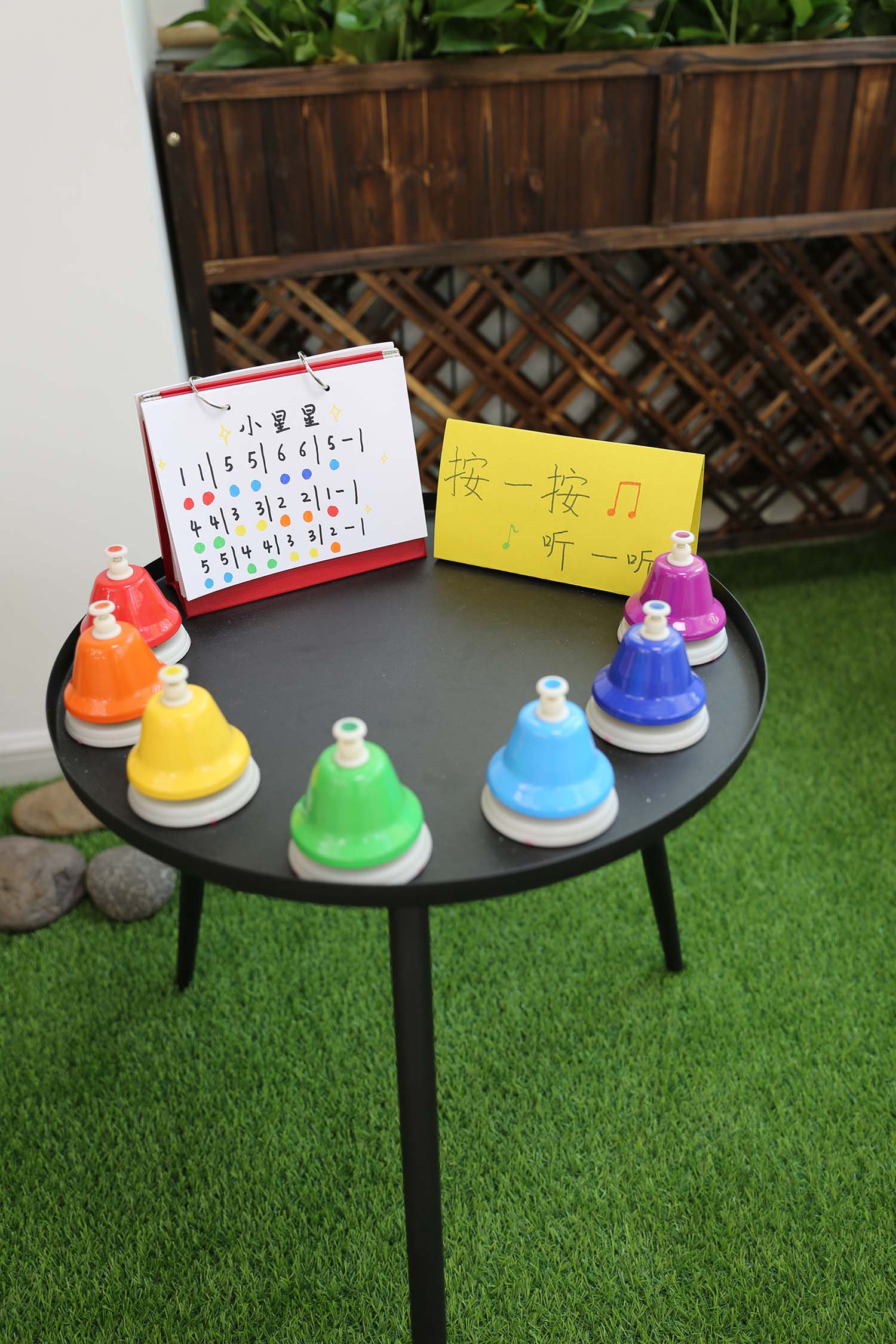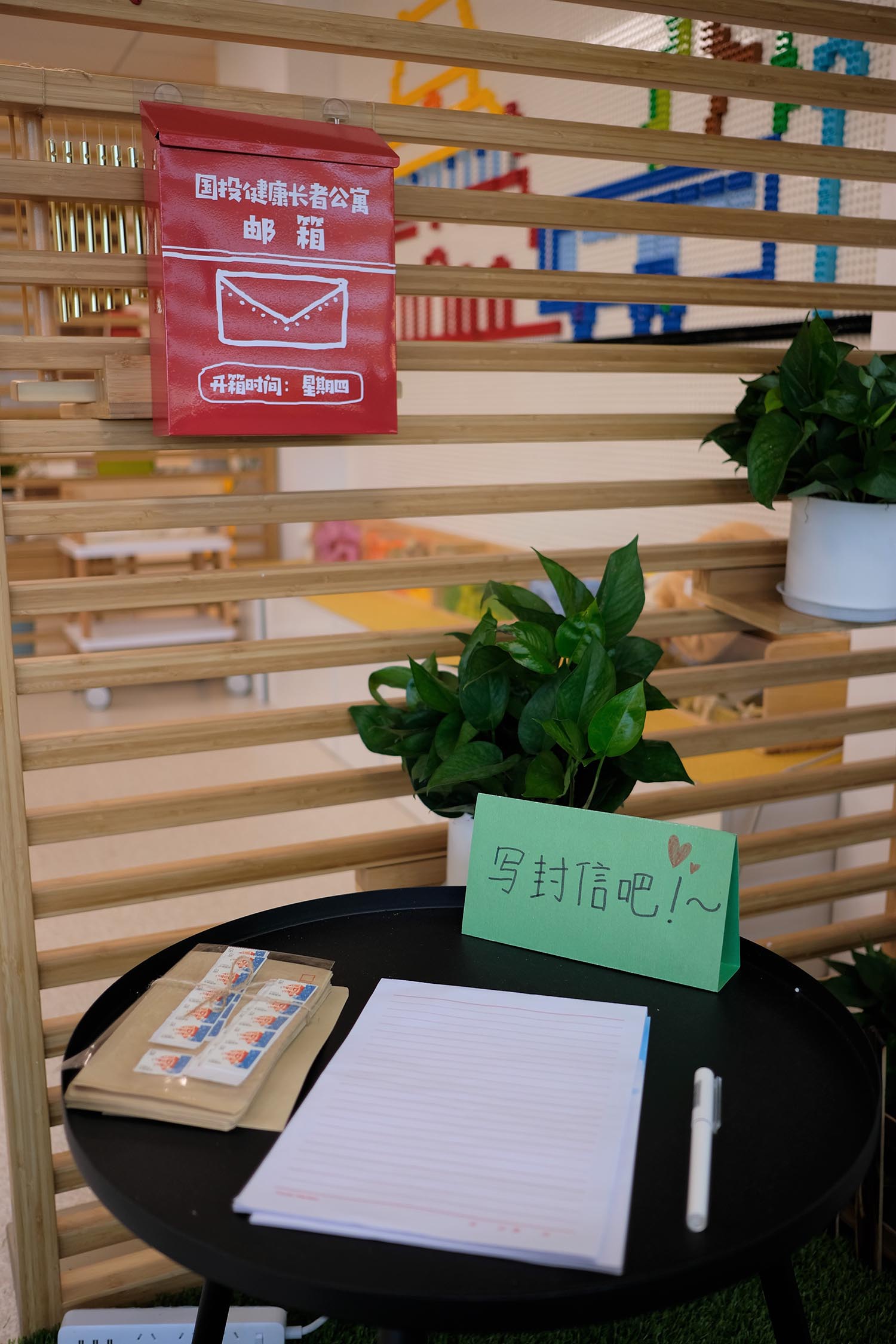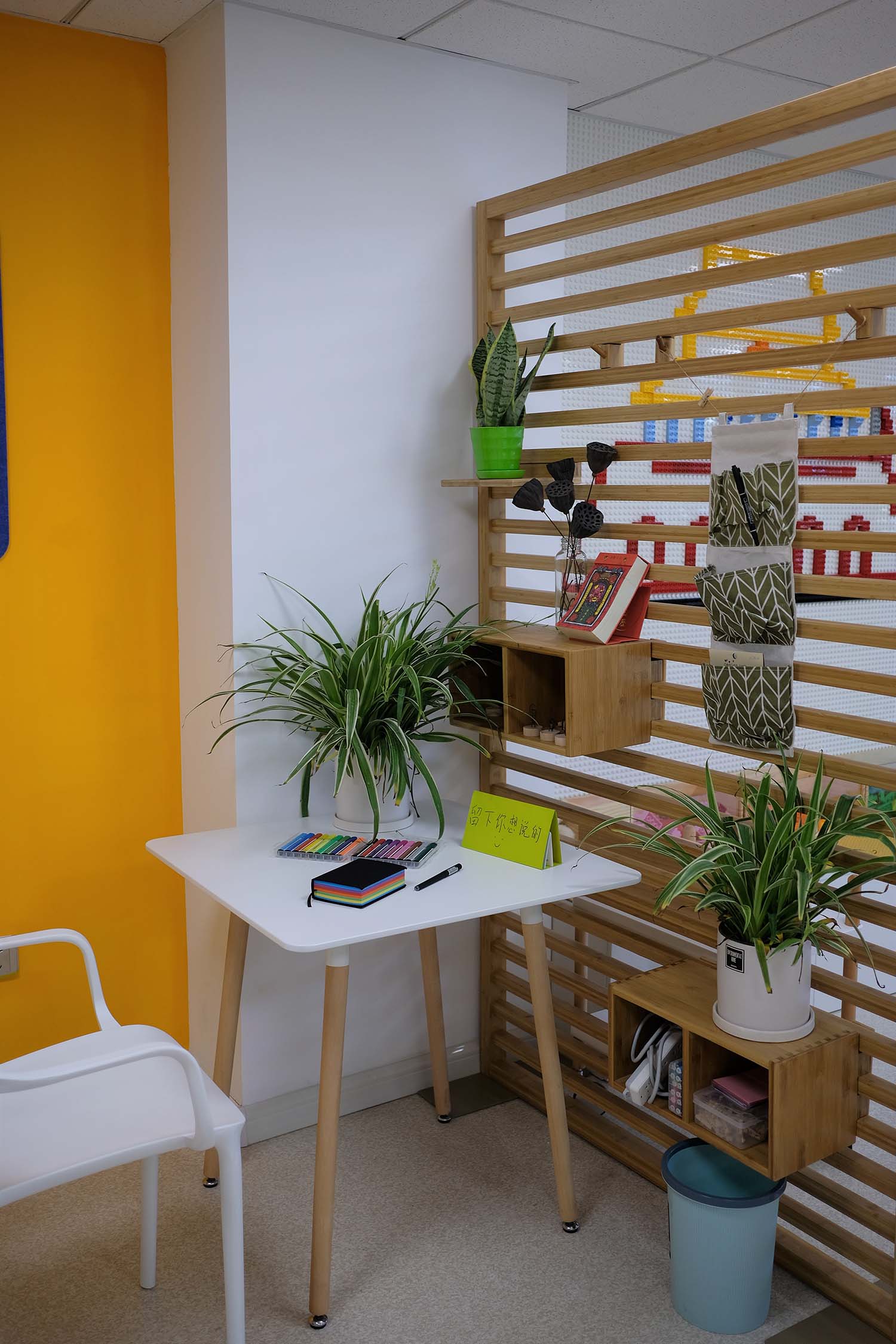全球设计风向感谢来自 中国电子工程设计院有限公司 健康与养老研究所 的公共空间项目案例分享:
本多感官环境活动室位于北京国投健康长者公寓,主要用于白天为在住及周围社区老人提供认知锻炼,以轻度认知障碍和失智老人为主。该空间设计在满足一般适老化需求的基础上,对多感官适度良性刺激、空间辨识度、空间特质契合老人记忆、提供自主自立机会、操作便捷性等方面提出更高需求,并将已被证实有效的非药物干预方法与空间设计相融合。
The project – SDIC Health & CEEDI Multi-sensory Activity Room is located in SDIC Health Senior Apartment in Beijing. It aims to provide sensory stimulation and cognitive training for the elderly living in and surrounding communities, mainly focused on MCI and mild dementia patient. Based on meeting the general elderly-oriented requirements, the design is chasing for higher requirements, including moderate stimulation of multi-sensory, spatial recognition, spatial fit with the elderly’s memories, providing opportunities for self-reliance, and convenience of operation for the elderly. Furthermore, this project is combined with non-drug intervention therapy proved to be effective.
设计的原则是以老人熟悉的场景、食物、物件、声音、行为等为媒介,以激活老人的长时回忆和注意力,通过老人自主或专业人士带领的方式,让老人得到良性的视觉、听觉、嗅觉、触觉、味觉等感官刺激以锻炼老人的感知觉、执行功能、注意力、手眼协调、时空定向能力和日常生活能力。除了在沉浸环境中通过物料和设备操作进行多感官刺激外,老人还可以参与小组活动及游戏,建立多人之间的交流关系,活动多为愉快和自主的气氛,成员间的信任感也相对容易建立。老人除可独自探索环境之外,也可向照护人员或其他人员请求帮助,从而也获得表达自己的动机。
环境设计的目的是通过营造老人熟悉而感兴趣的多感官场景,以激活长时回忆、注意力和自主性,比如采用老人儿时的场景、家乡食物、旧的物件、方言、自然和音乐的声音、以前的活动等为媒介,通过老人自主或专业人士带领的方式,让老人得到良性的视觉、听觉、嗅觉、触觉、味觉等感官刺激以锻炼老人的感知觉、执行功能、注意力、手眼协调、时空定向能力和日常生活能力。
The purpose of the environment design is to activate long-term memory, attention and autonomy by creating the elderly’s familiar and interesting multi-sensory scenes, such as childhood scenes, hometown food, old objects, dialects, sounds of nature and music, and previous activities. Through the way of self-determination or leading by professional staff, the elderly are able to acquire positive sensory stimulation such as vision, hearing, smelling, touching and tasting, which contributes to exercise the elderly’s sensory perception, executive function, attention, hand-eye coordination, space-time orientation and activities of daily living. In addition to multi-sensory stimulation by materials and equipment operation in the immersion environment, the older people are also able to participate in group activities and games to establish the communication among multiple people.
依托于经过特殊设计的多感官环境,我们进行了沉浸式多感官环境刺激干预随机对照实验。在该实验中,我们利用空间环境中的感官元素,为失智老人营造“五感沉浸”的干预环境,并提供平衡的视觉、听觉、嗅觉、触觉和味觉刺激。同时,结合怀旧、音乐、运动、生活训练、艺术等内容,验证了沉浸式多感官环境空间对老人有认知功能锻炼的作用。
After renovating this multi-sensory environment activity room, we conducted a randomized controlled trial of a multi-sensory environmental stimulation. In this trial, We made use of the sensory elements in the spatial environment to create a “five-sense immersion” environment for the elderly with dementia, and provide balanced visual, auditory, smell, touch and taste stimulation. Furthermore, we developed a series of intervention plans to verify the effect of this immersive multi-sensory environment space on dementia elderly combined with the concept of human-centered treatment and other non-medicine intervention, such as reminiscence, music and life training.
1.项目 Project
1.1 多感官环境设计 Environment Description
该房间位于国投健康长者公寓三层南向,空间宽7.8米,深8.45米。之前出于医疗环境的需求,该房间原设计为白色墙面、浅木纹PVC地面、矿棉石膏板吊顶、白色平板灯、无固定家具和设施。整体色调偏向于浅色,地面、墙面和顶棚色差很小,非常不利于失智老人对空间结构的识别和定向,故将部分白色墙面改为深绿色和橙黄色,在提高空间感受的同时,主要为了让老人更好地区分区域、增强辨识度。在墙边白色地柜顶部,布置了橙色和黄色编织坐垫,一是为了通过亮丽的色彩邀请老人坐下来,也是为了避免老人混淆地柜和白色墙面的界限。整个活动室分为小组活动区、系统控制区、沉浸式触控投影墙面、五感墙、乐高墙、时间角、自然角和情感角。
The room is located on south side of the third floor of the SDIC Health Senior Apartment, with a width of 7.8m and a depth of 8.45m.The room was originally designed with white wall, light wood-grain PVC floor, mineral wool gypsum board ceiling, white flat light, unfixed furniture and equipment for the medical environment. The overall tone tends to the light color, and the color difference between the ground, walls and ceiling is very small, which is not conducive to the recognition and orientation of the spatial structure for older people with dementia. Therefore, part of the white walls are changed into dark green and orange. While improving the spatial experience, the main purpose is to make the elderly better distinguish areas and enhance their identification. Orange and yellow woven cushions are arranged on the top of the white lower floor cabinet beside the wall, in order to attract the elderly to sit down through bright colors, and to avoid confusion of the barrier between cabinet and wall. The room are divided into several parts including group activity area, immersive touch projection wall, 5-sense wall, LEGO wall, time corner, nature corner, music corner, and system control area.
∇ 改造前(拍摄:韩涵)Figure 1 Before renovation (Photoed by Han Han)
∇ 改造后(拍摄:韩涵)Figure 2 After renovation(Photoed by Han Han)
∇ 平面图 Figure 3 Plan
1.2小组活动区 Group activity area
社会工作中根据组织活动内容以及参与对象的不同,小组适合规模也不尽相同,其中5 人小组比较适合讨论,8人小组最容易完成任务,治疗小组一般在 5~7 人12。考虑部分老人会需要家属、照护人员或志愿者、社工陪同,空间布置12张70cm×70cm方桌,可根据活动内容和形式进行多种组合布置。为了让老人有更明确的色彩辨识和亲切温暖的触感,在白色桌椅的基础上,每把椅子配置一个棉布条编织的彩色坐垫,且采用不同颜色,以便老人通过色彩增强对空间位置的记忆和识别,以更容易定位自己的位置和周边老人。
In social works, the proper group size is different according to the activity programs and different participants. Generally, 5-person group is suitable for discussion, 8-person group is the easiest to complete task, and a treatment group is appropriate for 5 to 7 persons It is considered that some of the elderly will need to be accompanied with family, caregivers, volunteers or social workers, twelve 70x70cm square tables can be arranged differently based on the content and form of activities. In order to make the elderly have a clear color identification and warm touch, each chair is covered with a colored cushion woven with cotton strips. Different colors are adopted for the elderly to strengthen the memory and recognition of spatial position, so as to identify their own position and surrounding people more easily.
∇ 小组活动区(拍摄:韩涵)Figure 4 Group activity area(Photoed by Han Han)
1.3触控互动墙面 Touch projection wall
为了便于老年人操作、提高其互动性和主动性,我们将一面墙改造为触控投影墙。用于老人自行操作认知锻炼的内容,或作为沉浸式活动的一部分。
针对老年人时间空间认知障碍、远期记忆尚存等特点,我们也开发了地图和二十四节气两款互动游戏。
地图游戏中,加入了山川、河流、湖泊、高原等自然风貌模拟场景,并且能展示几大典型区域的特色生活环境视频,让体验者沉浸于记忆的场景当中;建筑模式可以展示各省典型的标志性建筑和景区,点击即可触发其环境场景照片,同时加入了各地方言,让老人多感官沉浸于视觉和声音环境当中;美食模式,展示各地域的特色美食。
二十四节气游戏主要锻炼老人时间定向能力,将各节气和典型节日与春夏秋冬四季正确对应,即可触发节气歌播放,同时还呈现节气及四季场景视频。
In order to enhance the convince of the operation for the elderly, improve their interaction and initiative, a wall was renovated with touch projection function. It is used for the cognitive training for the elderly, as a part of immersion activities.
Based on the characteristics of dementia – cognitive impairment of time and space, and the retention of long-term memory, we also developed two interactive games (Chinese map game and the 24-solar-term game).
In Chinese map game, simulated natural scenes, such as mountains, rivers, lakes and plateaus were added, and the distinct living environment videos of several typical regions can be displayed, so that users can immerse themselves in the memorial scene. The architectural mode can display the typical landmarks and scenic spots in each province. After clicking the landmark, it will trigger the local environmental scene and play the local dialects, which immerse the elderly in visual and sound environment. The food mode shows the special food in different regions.
The 24-solar-term game mainly trains for the ability of time orientation. Once correctly matching the solar terms or typical festivals to the four seasons, it will trigger the playing of solar term songs, and also present the solar terms and four seasons scene videos.
∇ 触控互动墙面(拍摄:韩涵)Figure 5 Touch projection wall(Photoed by Han Han)
∇ 沉浸怀旧场景(拍摄:韩涵)Figure 6 Memorial scene(Photoed by Han Han)
1.4互动韵律灯光 Interactive rhythmic lighting
相关实验研究显示,音乐和灯光双环境因素对情绪同时刺激时, 具有交互作用。所以将活动区顶部设置灯光颜色、亮度可调节的灯具,可通过智能终端控制变化,可根据音乐、视频的节奏、音调等律动变化,同时提高老人的注意力稳定性,让老人更好地融合进场景当中。
Relevant experimental studies show that both stimulation of music and lighting create interactive effects on emotion. Therefore, flat lamps with adjustable light color and brightness are set on the ceiling of the activity area, which can be controlled by the intelligent terminal and changed according to the rhythm and tone of music and videos. This helps the elderly improve their attention stability, so that they can better experience the scene.
∇ 互动韵律灯光(摄影:韩涵)Figure 7 Interactive rhythm light(Photoed by Han Han)
1.5气味播放器 Intelligent smell player
智能气味播放器,是一种佩戴于颈部、能播放特定气味的设备,可集中控制其播放开关、时长、气味种类等,由于播放时间短、剂量小、离鼻部近等特点,便于根据场景内容快速切换气味。结合干预活动的内容场景,项目订制了几十种味道料盒,让老人嗅觉与其他感知觉结合,更好地沉浸于环境当中。一定程度上突破了味觉体验的传统技术。
A Kind of Olfactory training equipment – intelligent smell player – is also applied in the room. It is a kind of equipment that can release specific smell hanging around neck. It can be centrally controlled playing, duration and smell type. Due to the aspects of short duration, low dose and close to nose, it is easy to switch the smell according to the scene rapidly. Based on the scenes of the intervention activities, dozens of smell boxes were customized to enhance the feeling of immersing in the environment, stimulating or inducing the olfactory nerve reconstruction, to improve olfactory function, which breakthrough the traditional technology of olfactory experience to some degree.
∇ 与场景相结合的气味播放(摄影:韩涵)Figure 8 Using the intelligent smell player with the visual stimulation(Photoed by Han Han)
1.6五感墙 Five-sense Wall
通过穿孔背板置物架这种灵活的展现形式,结合展示物品的摆放,包括怀旧玩具、认知锻炼玩具、熟悉的植物、活动物料等,设计多种主题情景,激发老人主动探索的行为。例如请老人将活动物料根据色彩进行收纳;在老式饼干桶内放置有香味有手感的面包模型,通过写有“打开看一看、闻一闻”的卡片提示,引导老人打开、闻里面的味道、触觉去探索、拿出来确认,过程就形成了一个有趣的多感官体验;将有气味特点的植物包在荷包里,通过写有“闻一闻、猜一猜”的卡片提示,引导老人在闻、猜、打开、解密的一系列过程中进行思考、锻炼。也可根据干预活动主题对墙面进行环境布置,例如超市主题活动时,墙面通过商品、价钱、分类标志的布置形成超市场景;怀旧主题活动时,墙面通过老物件、老照片、老报纸、奖状等物品的布置形成怀旧场景;音乐主题活动时,通过摆放乐器、歌词、歌谱、歌唱家照片等形成音乐场景。
By using the flexible display form of perforate back shelf, combined with the exhibition of the items, including reminiscent toys, cognitive training toys, familiar plants, activity materials, etc., a variety of theme scenarios are designed to stimulate the initiative of the elderly’s exploration behavior. For instance, the elderly could be asked to arrange the materials according to the color; they still could be attracted by some bread models with real smell and touch feeling in the old biscuit box with a tip card says “open and smell”; some specific species would be placed in small bags with a tip card says “smell and guess”, and the elderly could exercise their ability to recognize and think in the process of smelling, guessing, opening and deciphering. The decoration on the wall shelf can also be changed according to the activity theme. For example, in the supermarket theme activities, it is formed by the arrangement of products, price tags and classification marks; in the reminiscent theme activities, it is formed by the exhibition of old objects, old photos, old newspapers, awards and other items; in the music theme activities, it is formed by placing instruments, lyrics, music scores, and singers’ photos.
∇ 五感墙(摄影:韩涵)Figure 9 Five-sense wall(Photoed by Han Han)
∇ 怀旧饼干盒(摄影:韩涵)Figure 10 Interaction with the old biscuit box(Photoed by Han Han)
∇ 气味角——气味荷包(摄影:韩涵)Figure 11 Smelling corner – species bags(Photoed by Han Han)
∇ 怀旧物件(摄影:韩涵)Figure 12 Traditional Chinese toys and objects(Photoed by Han Han)
1.7乐高墙 LEGO wall
利用乐高积木像素化、自由组合成的特点,可以通过请老人设计或参照图案并动手完成的过程,锻炼色彩辨识能力、执行功能和整体构图能力。每次活动前,会邀请老人共同创作一副与活动主题相关的图案,为活动内容做引导,老人根据自己的能力和兴趣参与其中部分工作任务。同时也提供小朋友与老人共度时光、分享交流的机会。
With the characteristics of pixel and free combination of LEGO building blocks, the color recognition ability, executive function and overall composition ability can be practiced through the process of forming the pattern according to their or others design. Before each activity, the elderly will be invited to create a pattern related to the theme of the activity with the caregivers. The elderly can choose the task that they are interested in. It also provides an opportunity to create a leisure time of communication with children.
∇ 乐高墙(摄影:韩涵)Figure 13 LEGO Wall(Photoed by Han Han)
1.8自然角 Nature corner
自然角有植物、鹦鹉、竹子风铃、草坪、石头等,希望为老人营造一个清新自然可以享受时光的角落。在沉浸之余,采用老人熟悉的沟通交流方式,布置了激发老人内心思考、回忆过去的场景,准备了邮筒、信纸、邮票、信封,老人可以将自己的想法写成信件放在邮筒里。布置了一个音乐角,通过色彩来区分按钟音高,不识谱的老人也可以通过色彩辨识,弹奏音乐,通过眼睛、手指、耳朵的协调和脑部的思考,协调操作进行锻炼。
There are plants, parrot toys, bamboo wind bells, artificial lawn and stone in Nature corner, for creating a fresh natural space where the elderly can enjoy time. It also set up a scene that activates the old people’s inner thinking and recalls the past memory with communication methods that the elderly are familiar with – writing letters. Mailbox, stationery, stamps and envelopes. The elderly can write whatever they think into letters and put them into the mailbox. There is also a music corner. Because of using colors to distinguish pitches of the music bells, the elderly who cannot read music are able to play the instrument by color recognition. The elderly can exercise through the coordination of eyes, fingers, ears and brain thinking.
∇ 自然角(摄影:韩涵)Figure 14 Nature corner(Photoed by Han Han)
∇ 色彩音阶按钟(摄影:韩涵)Figure 15 Using colors to distinguish pitches of the bells(Photoed by Han Han)
∇ 信件空间(摄影:韩涵)Figure 16 The mailbox and letter paper(Photoed by Han Han)
1.9时间角 Time corner
失智老人多有时间定向障碍,包括年代、季节和时刻等,故设计时间角以提醒老年人所处时间、增强其时间定向。采用深绿色墙面,布置大字的钟表、日历,以及结合了自然景物特征的二十四节气卡片。
Most the elderly with dementia are suffering from temporal disorientation, including the inability to recognize era, season and time. Therefore, the time corner is designed to remind the elderly of time, and enhance their temporal orientation. A clock with obvious large-scale numbers on the panel, a calendar, and 24-solar-term cards combined with natural features are decorated on a dark green wall.
∇ 时间角(摄影:韩涵)Figure 17 Time Corner(Photoed by Han Han)
1.10情感角 Emotion corner
情感角目的在于引导老人分享自己的感受,让更多的老人与空间建立起情感的联系。布置有活动照片,并且邀请老人坐下来留言。
The purpose of emotion corner is to lead the elderly to share their feelings and to establish emotional connection between people and space. The activity photos are illustrated in this area, and the elderly will be invited to sit down and leave a message.
∇ 情感角(摄影:韩涵)Figure 18 Emotion corner(Photoed by Han Han)
2.随机对照试验 Randomized Controlled Trial
本次研究从白天来做活动的周围社区老人和公寓在住老人中选取55~95岁有认知障碍的老人(MMSE10~26分)作为研究对象,分为干预组和对照组。实验组27人,对照组30人。实验组给予多感官环境刺激干预,干预分为7个不同的主题,包括《岁月金曲》《印象北京》《幸福花园》《玩转超市》《舌尖上的记忆》《金色故乡》和《光影人生》,实验每周1次,每次40分钟~1个小时,共7次。
In this study, dementia patients aged 55~95 years (MMSE score 10~26) were selected from the elderly people living in the apartment and surrounding communities who did activities during the daytime as the research subjects and divided into a intervention group(n=27) and a control group(n=30). The intervention group received multi-sensory environment intervention with 7 different themes, including “Reminiscence Melodies”, “Impression of Beijing”, “Sensory Garden”, “Go Supermarket Shopping”, “A Taste of Memory”, “Golden Hometown” and “Life in Cinema”. The experiment was conducted once a week for 1 hour each time and 7 times in total.
干预前、干预后分别对两组老人进行评估,评估内容包括一般资料、MMSE、听觉词语学习测验、数字划消测验、Stroop色词测验、言语流畅性测验、日常生活功能量表ADL、神经精神问卷NPI-Q、病人健康问卷抑郁量表PHQ-9、、广泛焦虑量表GAD-7。
The patients would be evaluated before and after the intervention. The assessment content includes general information, MMSE, Auditory Word learning test, Number Cancellation test, Stroop Color Word test, Verbal Fluency test, Activities of Daily Living scale (ADL), Neuropsychiatric Inventory (NPI-Q), Patient Health Questionnaire (PHQ-9), and Generalized Anxiety Screening Scale (GAD-7).
所有数据采用SPSS统计学软件进行分析,一般资料采用独立样本t检验,两组老人干预前后各量表得分采用重复测量方差分析。
结果显示,MMSE量表(F=11.754, p =0.001)和词语流畅性(F=4.717,p =0.034)的得分有显著性差异。也就是说,多感官环境刺激干预对失智老人的认知功能和语言表达能力有短期的积极效果。
All data were analyzed by SPSS. Independent sample T-test was used for general information. The scores of each scale before and after intervention were measured by ANOVA for Repeated Measurement.
The results indicated that MMSE scale (F=11.754, P =0.001) and Verbal Fluency test-Animal (F=4.717, P =0.034) had significant differences. In other words, multi-sensory environmental intervention has a short-term positive effect on cognitive function and language expression in the elderly with dementia.
3.总结 Summary
国投健康长者公寓多感官环境活动室为周边老人和在住老人提供认知锻炼活动。设计过程挖掘老年人的生活时代特点和兴趣爱好,结合多感官刺激的原则和干预活动的需求,通过沉浸场景和多形式变化的形式,更好地为老人营造多感官刺激环境,以增强老人的沉浸感、自主性和趣味性。
SDIC Health & CEEDI multi-sensory activity room provides cognitive training for the elderly living in SDIC Apartment and surrounding communities. The process of design excavates the characteristics of the elderly’s life background and their hobbies. Through the immersive scenes and diversity of programs, combined with the principles of multi-sensory stimulation and demand of intervention activities, it creates a better sensory stimulation environment for the elderly, in order to enhance the feeling of immersion, autonomy and curiosity.
致谢|Acknowledgements:
国投健康长者公寓为本项目提供场地、人员招募等重要研究支持。
SDIC healthy elderly apartment provides important research support such as space and personnel recruitment for the project.
诚和敬乐智坊受本项目委托进行人员招募、干预及能力评估等工作。
CHJCARE Lezhi were commisioned to recruit elderly, conduct the intervention activities and capacity the elderly’s assessment.
项目信息
项目名称:国投健康长者公寓多感官环境活动室
设计方:国投健康长者公寓多感官环境活动室
公司网站:http://www.ceedi.com.cn
联系邮箱:hanhan@ceedi.cn
项目设计&完成年份:2019
主创及设计团队:韩涵 陈文 江莹 胡旭婧 李鹏 鲁卫华 崔震等
项目地址:北京市西城区阜成门外大街
建筑面积:66㎡
摄影版权:韩涵
客户:国投健康产业投资有限公司
Project name:SDIC Health & CEEDI Multi-sensory Environment Activity Room
Design:China Electronics Engineering Design Institute CO., LTD.(CEEDI) Research Institute of Health and Aging
Website:http://www.ceedi.com.cn
Contact e-mail:hanhan@ceedi.cn
Design year & Completion Year:2019
Leader designer & Team:Han Han Chen Wen Jiang Ying Hu Xujing Li Peng LuWeihua CuiZhen etc.
Project location:北京市西城区阜成门外大街
Gross Built Area (square meters):68㎡
Photo credits:韩涵
Clients:国投健康产业投资有限公司

